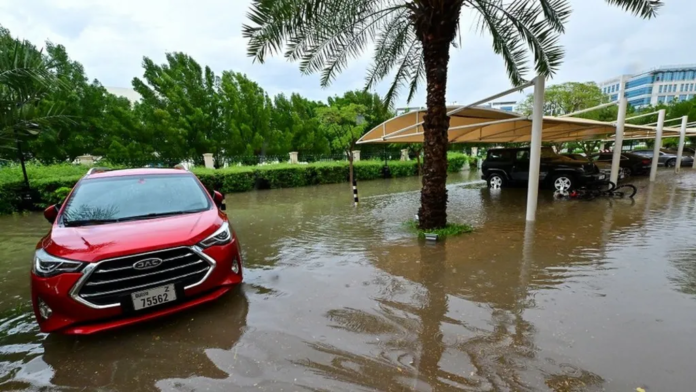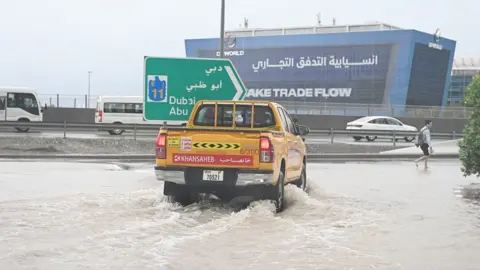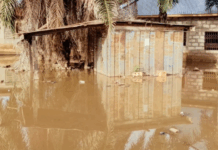
Heavy rain has battered some Gulf states, causing flash flooding across the region and leading to flights to the world’s busiest international airport being diverted.
Dubai Airport said operations were “temporarily diverted” – though they have since restarted.
Authorities in Oman said at least 18 people had been killed by floods.
Several states recorded nearly a year’s worth of rain in a day.
Unverified video from Dubai International Airport appeared to show jets leaving waves in their wake as they made their way down flooded runways.
In a statement, the airport said inbound flights due to arrive on Tuesday evening had been diverted “due to the continued exceptional weather event currently being experienced in the UAE”.
Departures would continue to operate, it added. Flights later restarted after an interruption of about two hours.
On Tuesday morning, the UAE’s National Centre of Meteorology issued a weather warning for large swathes of the country, including Abu Dhabi, Dubai and Sharjah.

The Gulf region is usually known for hot and dry weather, though heavy rains causing flooding have also occurred with greater regularity in recent years.
In neighbouring Oman, authorities said the death toll from flash floods had increased to 18, with some still missing. The dead included 10 students aged between 10 and 15 who were killed on 14 April when the vehicle they were travelling in attempted to cross a flooded area but was swept away.
In Bahrain, footage showed cars stranded in flooded roads.
 Getty ImagesVehicles were hardly moving on flooded streets due to heavy rain in Dubai
Getty ImagesVehicles were hardly moving on flooded streets due to heavy rain in Dubai
Some commentators have linked the unusual weather to climate change, saying exceptional storms will become more common in future as the planet warms.
For every 1C rise in average temperature, the atmosphere can hold about 7% more moisture. This can result in more droplets and heavier rainfall, sometimes in a shorter space of time and over a smaller area.






